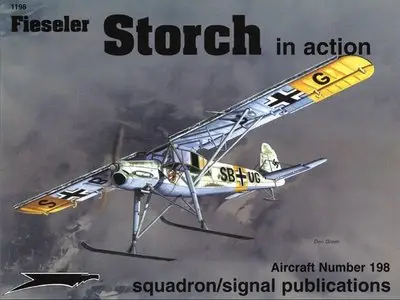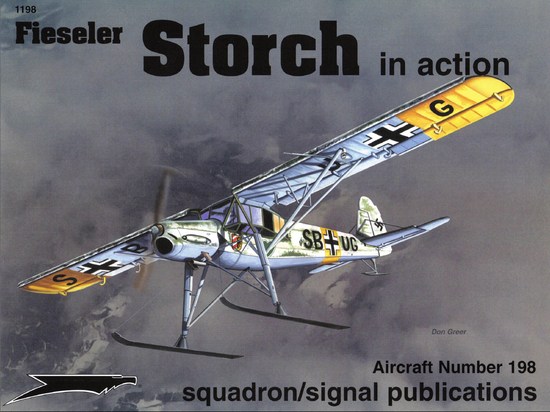Fieseler Storch in action (Aircraft Number 198) By Jerry L. Campbell
Publisher: Squadron Signal 2005 | 52 Pages | ISBN: 0897474937 | PDF | 33 MB
Publisher: Squadron Signal 2005 | 52 Pages | ISBN: 0897474937 | PDF | 33 MB
William Green, the famed English aviation historian, has described the Fieseler Fi 156 Storch (Stork) as that "...remarkable slow-flying Fi 156 [that] was so appropriately named. This unpretentious, somewhat bizarre braced monoplane, with its extensive high-lift devices, bulged transparent 'conservatory,' and stalky, long-stroke undercarriage designed to absorb the high impact of high vertical descent rates, perhaps most completely represented army cooperation and observation aircraft ideas of the mid 'thirties...." Designed by Gerhard Fieseler, a 22-victory World War I ace, and his chief designer Reinhard Mewes, both of whom specialized in short takeoff and landing (STOL) aircraft, the Fieseler Fi 156 Storch was to become one of the most prolific STOL aircraft of World War II and certainly one of most successful in its appointed role. Again to quote William Green, "It has been said that wherever the Wehrmacht was to be found so would be found the Storch." The lightweight fuselage was constructed of rectangular sections of welded steel tubing covered by fabric. Wings were of two-spar fabric-covered wood construction, and tail surfaces were plywood-covered. The entire leading edge of the wing was covered by aluminum slats, and the entire trailing edge of the wing was hinged, the inner portion acting as slotted flaps, the outer sections serving as statically balanced ailerons. The Fi 156 Storch got its 'appropriate' name from its stalky, long-stroke undercarriage made up of two compression legs of steel-spring, oil-damping shock absorbers in a reverse pyramid hanging from the fuselage and braced to the center underside of the fuselage. A tail skid was installed rather than a tail wheel, although a tail wheel would be installed on some Storche at the end of the war.
NO PASSWORD
!!!No Mirrors below, please! Follow Rules!
!!!No Mirrors below, please! Follow Rules!



